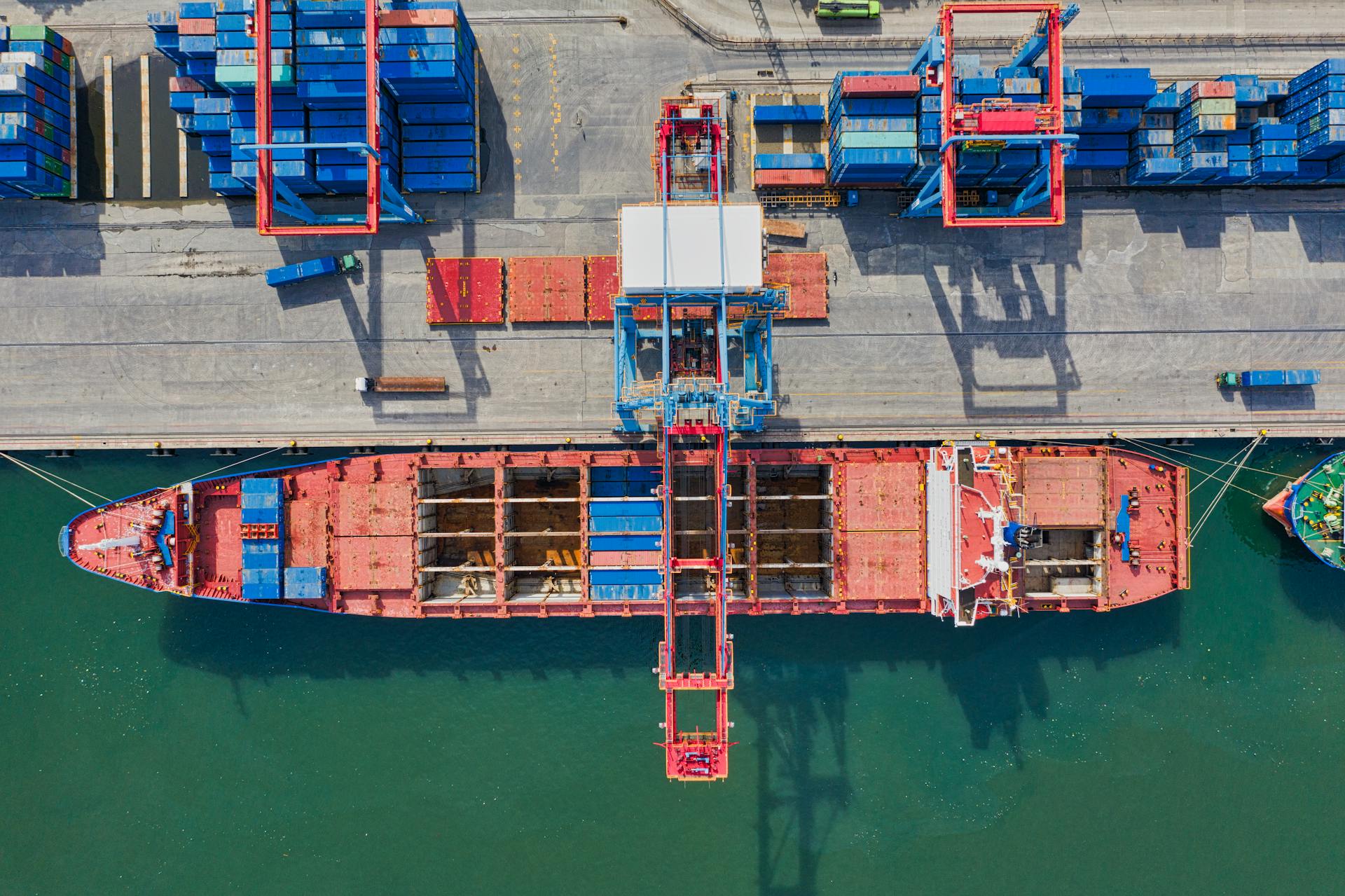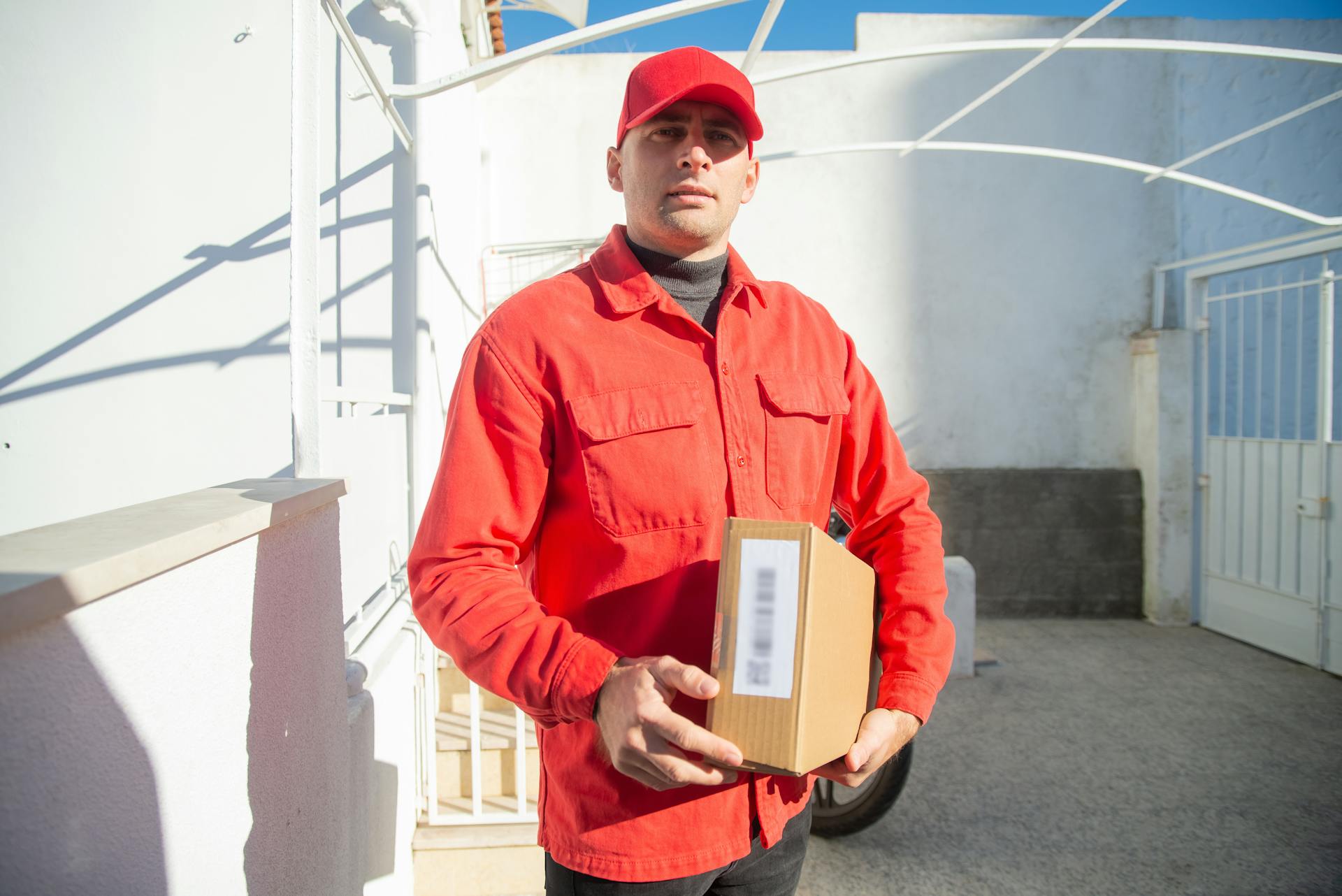
Portugal has a rich maritime history and a significant number of ports along its coastline. With over 1,700 kilometers of coastline, it's no surprise that the country has a well-developed port system.
The Port of Lisbon, located on the Tagus River, is one of the busiest ports in Portugal and a major cargo hub. It handles a significant amount of cargo, including containers, oil, and dry bulk goods.
Portugal's ports are strategically located to facilitate trade with neighboring countries and the rest of the world. Many of its ports are equipped with modern infrastructure, including cranes, warehouses, and other facilities.
The Port of Sines, located in the Alentejo region, is another important port in Portugal, handling a significant amount of cargo and serving as a key hub for the country's automotive industry.
For another approach, see: List of Busiest Ports by Cargo Tonnage
Ports in Portugal
The Port of Lisbon is the main seaport of Portugal, situated on the banks of the Tagus River near its outlet to the Atlantic Ocean. It handles most of the country's export-import trade and is a crucial contributor to the city's economy.
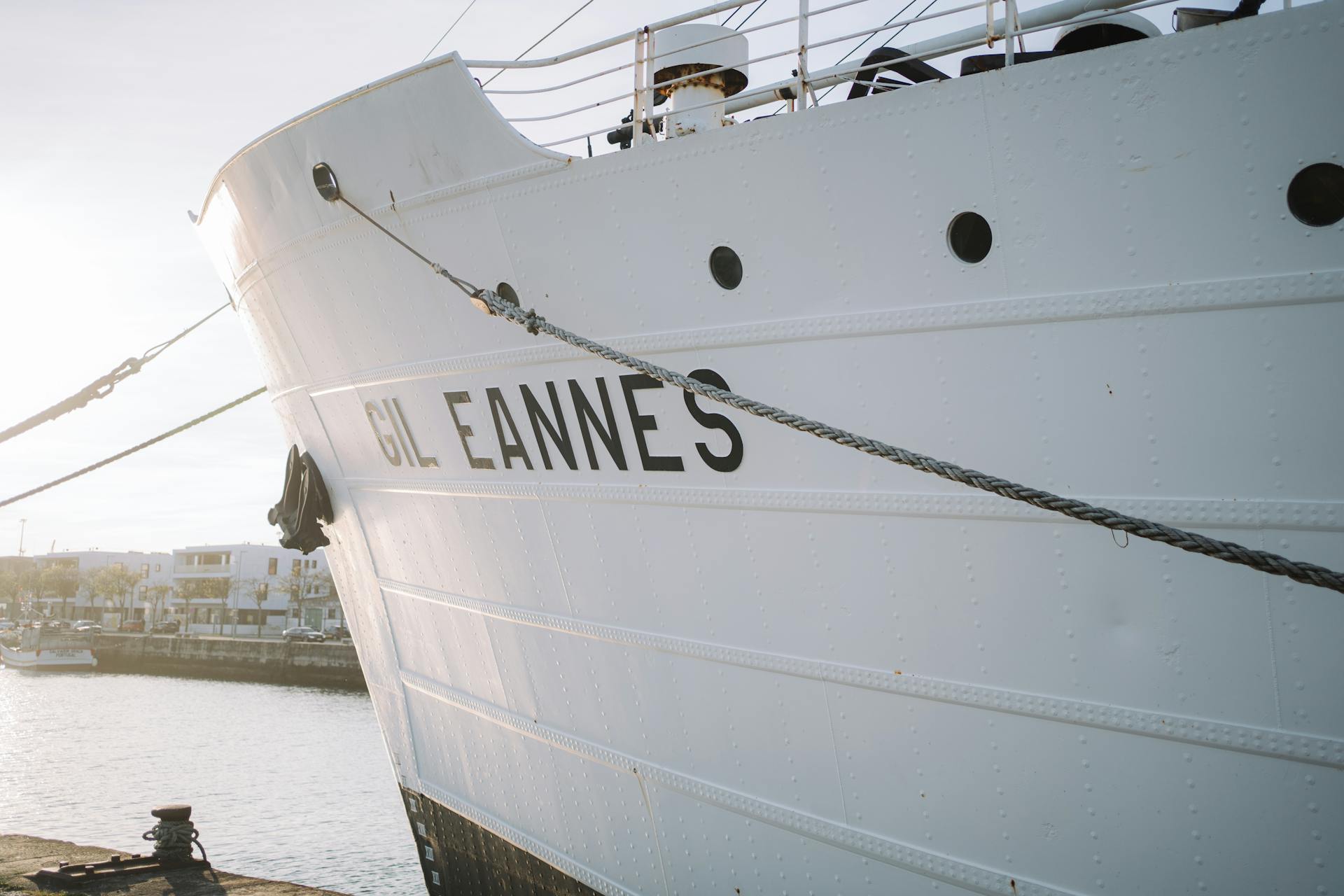
The port covers an area of over 32,000 hectares and offers a generous berthage of over 16,000 meters. It is strategically located on both the North and South banks, with the North bank boasting a multitude of berths, totaling 13,000 meters in length, with depths ranging from 4 to 13 meters.
The Port of Lisbon welcomes over 3,500 vessels annually and manages a staggering 13,200,000 tonnes of cargo and 555,000 TEU. Its main focus lies in agricultural foodstuff and containerized cargo. The port is also a popular tourist destination, attracting recreational boaters and yachters.
Here are some key statistics about the Port of Lisbon:
The Port of Setúbal, located south of Lisbon, is another major hub for bulk cargo and vehicle handling. It serves both domestic and international trade efficiently and is a key partner for manufacturers and automotive industries.
Setúbal
Setúbal is a major hub for bulk cargo and vehicle handling in Portugal's southern region. The Port of Setúbal is strategically located south of Lisbon, making it an essential partner for manufacturers and automotive industries.
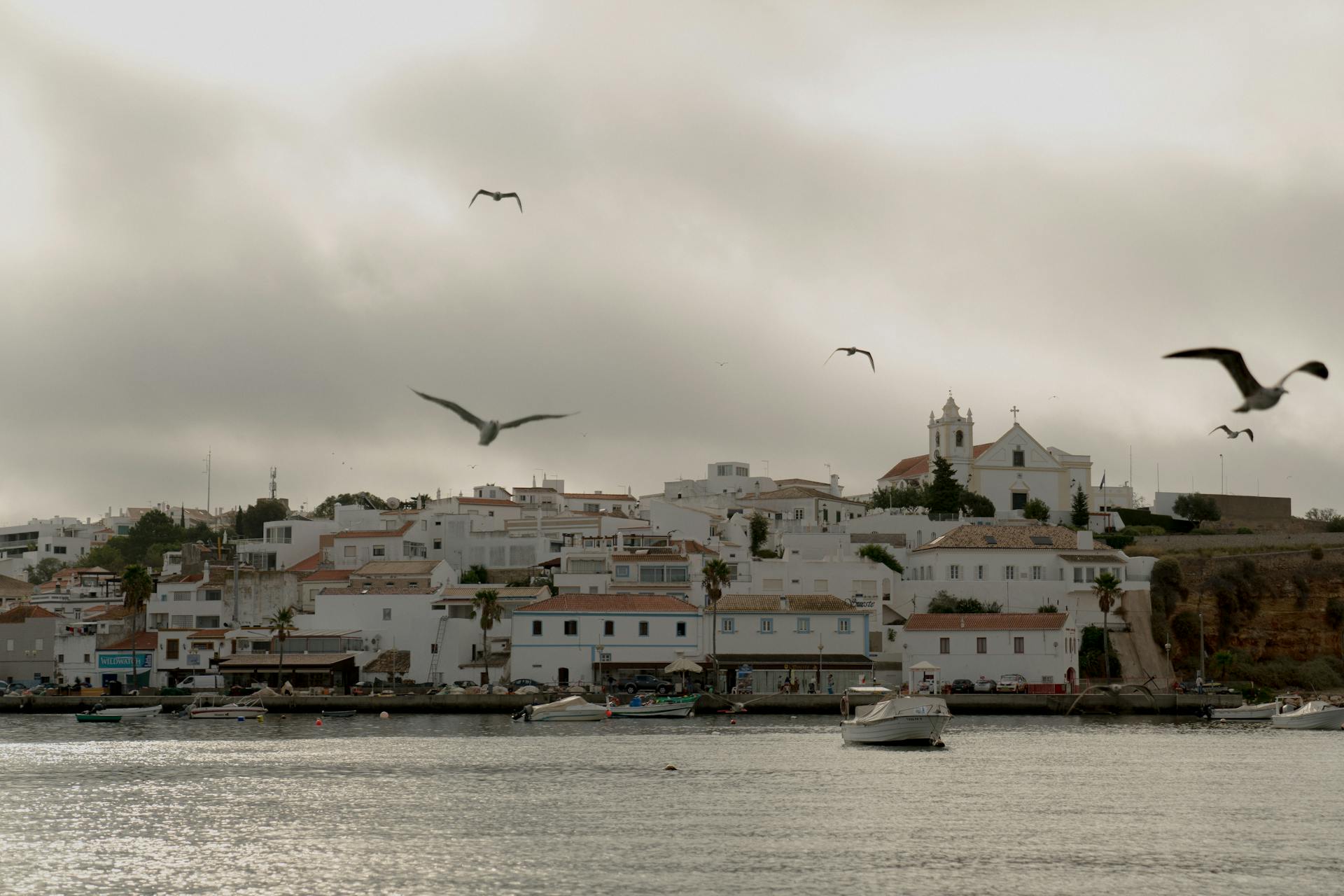
One of Europe's top ports for vehicle transshipment and export is the Port of Setúbal. It processes over 200,000 vehicles annually.
The port's specialized terminals facilitate the efficient movement of cement, fertilizers, and minerals. Bulk cargo handling is a key aspect of the port's operations.
The Port of Setúbal plays a critical role in Portugal's automotive industry by exporting vehicles to Europe and beyond. It also handles millions of tons of bulk cargo every year.
The port is frequently used for offshore wind farm components and other energy-related projects. Regional connectivity is another important aspect of the port's operations, supporting economic activities in Portugal's central regions.
The Port of Setúbal is actively implementing measures to reduce its environmental footprint. This focus on sustainability is a notable aspect of the port's operations.
Here are some key statistics about the Port of Setúbal:
- Vehicle Export: Over 200,000 vehicles processed annually
- Bulk Commodities: Millions of tons of bulk cargo handled every year
- Energy Projects: Frequently used for offshore wind farm components and other energy-related projects
- Regional Connectivity: Supports economic activities in Portugal's central regions
- Sustainability Focus: Actively implementing measures to reduce its environmental footprint
Ports in Portugal
The Port of Lisbon is a major hub for trade and tourism in Portugal, handling over 600,000 TEUs annually. It's strategically located near the Tagus River and the Atlantic Ocean, making it a crucial gateway for international trade.

The port has a long history, dating back to the Phoenicians, and has been an important trading post for centuries. Today, it's one of the world's most efficient port facilities, attracting investors and tourists alike.
The Port of Lisbon covers an area of over 32,000 hectares, with a generous berthage of over 16,000 meters. It's spread over the North and South banks, with the North bank boasting 13,000 meters of berths and the South bank featuring 3,000 meters of berths.
The port handles a diverse range of cargo, including containers, bulk, and conventional goods. It also has three passenger or cruise ship terminals, such as the Alcantara terminal, which possess the best safety equipment.
Recreational boating is a popular activity at the port, with four docks handling around 1,100 boats throughout the year. The port also attracts over 400,000 tourists annually.
Here's a breakdown of the port's annual statistics:
- Annual throughput: approximately 600,000 TEUs
- Cargo handled: 13,200,000 tonnes
- Vessels visited: over 3,500
- Tourists: over 400,000
The Port of Lisbon is a vital part of Portugal's economy, serving its manufacturing, industrial, and tourism sectors. Its strategic location on Europe's western coast makes it a crucial link in international maritime trade networks.
Aveiro
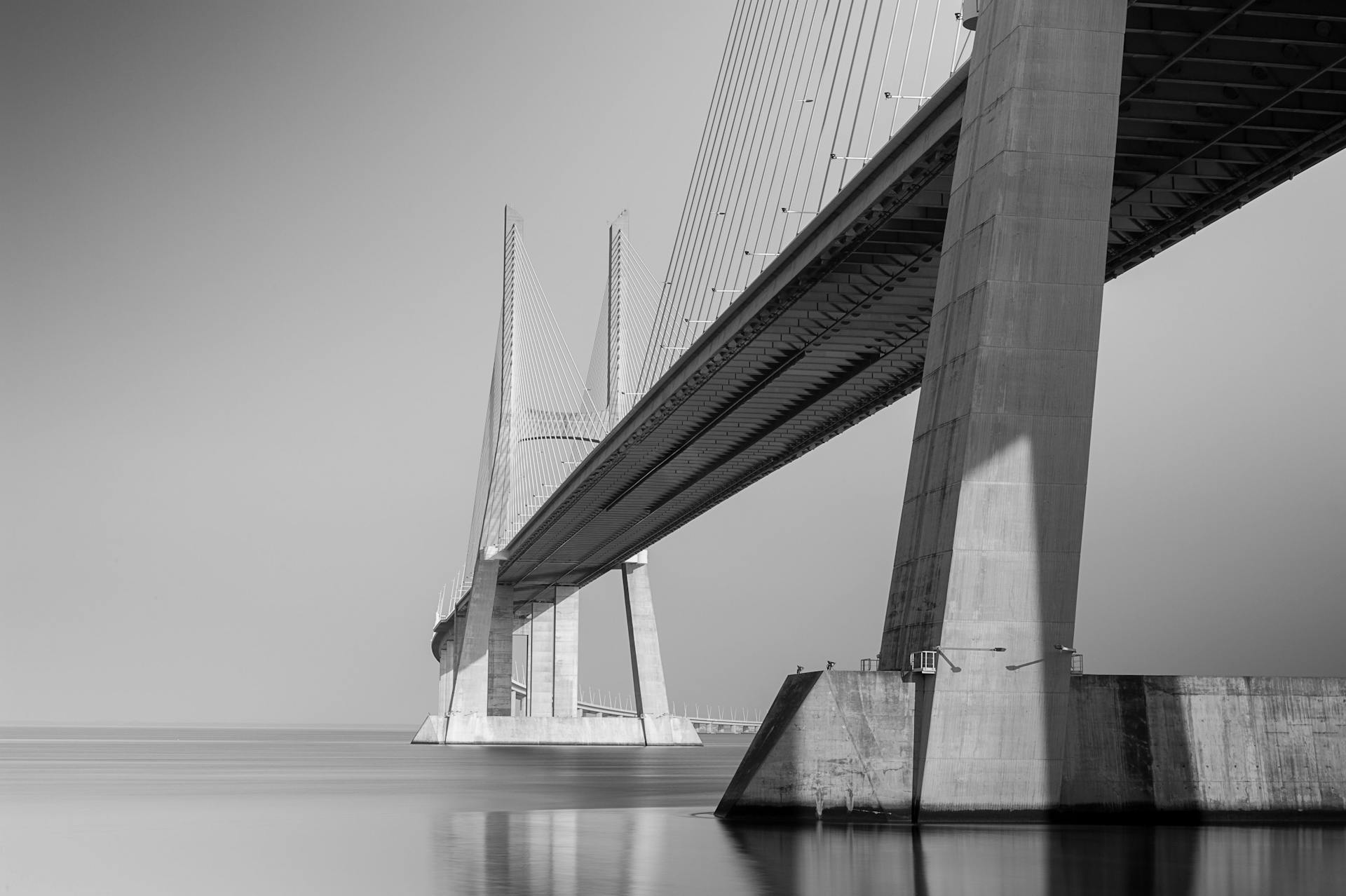
The Port of Aveiro is a vital part of Portugal's western coastline, situated on the Aveiro river. It's a protected river port that facilitates the export of various goods, including general cargo, paper pulp, liquid chemicals, and fish.
The port attracts over 1000 vessels each year, handling approximately 3.5 million tonnes of cargo annually. This makes it a significant contributor to the Portuguese economy.
The Administracao do Porto de Aveiro (APA SA) oversees the port's operations, management, and developmental projects, ensuring its efficient functioning and growth. The APA SA was established in 1998.
The port is divided into five distinct areas: the North terminal, Chemical handling facility, offshore fishing sector, South terminal, and the Coastal fishing zone. Each area caters to specific industries in the surrounding regions.
The North Terminal is a key facility, comprising a 900 m long dock and eight warehouses, including two dedicated to storing cement and bagged goods. It mainly deals with general cargo and solid bulk like cement, cereal, paper, metal, wood, and clay.
Here are the five distinct areas of the Port of Aveiro:
- North Terminal
- Chemical handling facility
- Offshore fishing sector
- South terminal
- Coastal fishing zone
Porto

Porto is a vital maritime hub situated along the Douro River near the city of Porto.
The Porto Port is one of the country's busiest ports, facilitating various cargo operations, including containers, bulk goods, and cruise liners.
Its modern terminals are equipped with state-of-the-art facilities for efficient cargo handling and storage.
The port offers passenger services and amenities for cruise ships, contributing to the region's tourism sector.
Porto Port's strategic location, combined with advanced infrastructure, ensures seamless connectivity to global shipping networks.
The port's UN/LOCODE is PTOPO, making it easily identifiable in the maritime industry.
The Administracao dos Portos do Douro e Leixoes, SA is the Port Authority responsible for managing the Porto Port.
For another approach, see: Cruise Terminal Lisbon Portugal
Port Details
The Port of Leixões is a key player in Portugal's maritime trade, handling a significant portion of the national cargo volume. It's situated in the northern city of Matosinhos near Porto, and is one of the busiest ports in the country.

The port has advanced terminals that include facilities for containers, liquid bulk, dry bulk, and general cargo. It also has a dedicated logistics park that offers warehousing, storage, and distribution services.
The port's annual container throughput is around 700,000 TEUs, accounting for 25% of Portugal's port traffic. It handles over 5 million tons of cargo annually, making it a significant contributor to regional employment and trade.
Here are some key statistics about the Port of Leixões:
Leixões
The Port of Leixões is a key player in Portugal's maritime trade, located in the northern city of Matosinhos near Porto. It's one of the busiest ports in the country, handling a significant portion of the national cargo volume.
The port is equipped with advanced terminals that handle containers, liquid bulk, dry bulk, and general cargo. It also has a dedicated logistics park that offers warehousing, storage, and distribution services.
Leixões Port is a vital hub for international trade and maritime activities, serving the northern region of Portugal. It handles a diverse range of cargo, including containers, bulk goods, and vehicles.

The port's cargo throughput is around 15,650,000 tonnes annually, and it handles 450,000 TEU of containerized goods. It also accommodates over 25,000 passengers and can handle vessels weighing over 100,000 tonnes.
Here's a breakdown of the port's key statistics:
The port has three quays specifically designed for handling conventional cargo, which deal with shipments of various commodities. These quays are equipped with state-of-the-art port equipment and have a storage space spanning more than 50,000 square meters.
Leixões Port has a north and a south container handling facility that became operational in 1999. The Northern terminal has an annual handling capacity of 250,000 TEUs and a storage capacity of 4,000 TEUs, while the Southern Terminal handles 350,000 TEUs annually and stores 15,000 TEUs.
Viana Do Castelo
Viana Do Castelo is a port located in the northwest region of Portugal, along the Atlantic coastline. It operates on both sides of the Lima river.
The port is accessible to ships with a draft of up to 8 meters and a length of 200 meters. It has a commercial port with a capacity to handle approximately 1 thousand tons of cargo per year.
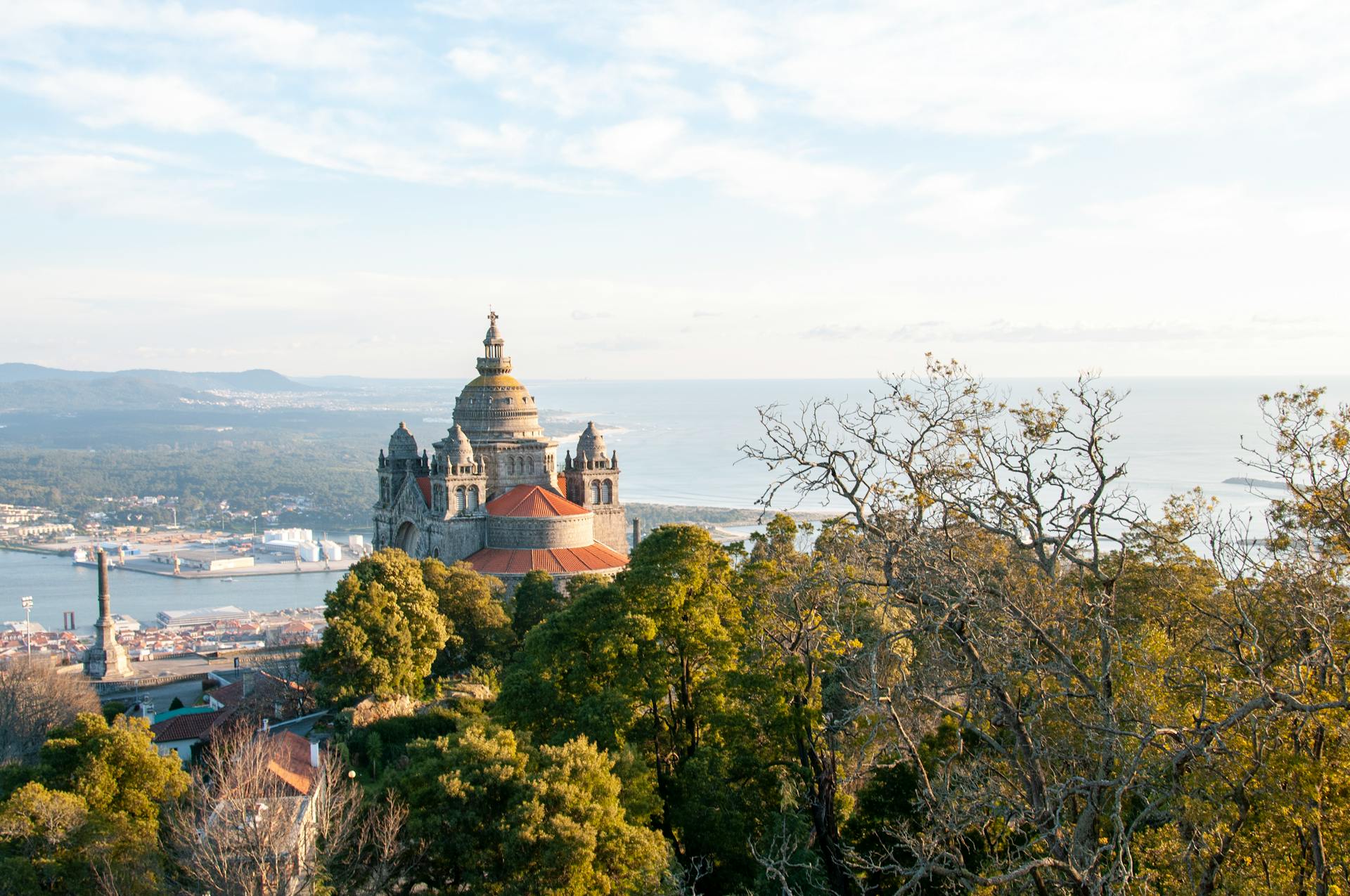
The commercial port comprises two sections of pier, spanning a total length of 487 meters. It's equipped with high-capacity cranes and a Roll-On/Roll-Off terminal.
The port offers ample parking and storage areas for goods. It's designed to handle various types of cargo, primarily general break-bulk and solid bulk cargo.
Viana Do Castelo Port is situated in Portugal, on the country's northwestern coast. It serves as a vital gateway for maritime trade and transportation in the region.
The port provides convenient access to the Atlantic Ocean, making it an important hub for both domestic and international maritime activities.
Setubal
Setubal is a significant maritime facility located on the Atlantic coast of Portugal, situated on the estuary of the Sado river. It's a considerable distance from Lisbon.
The port serves as the primary facility in Portugal for handling ro-ro vessels, followed by containerized goods, breakbulk, and bulk cargo. It also provides shipbuilding and ship repair services.
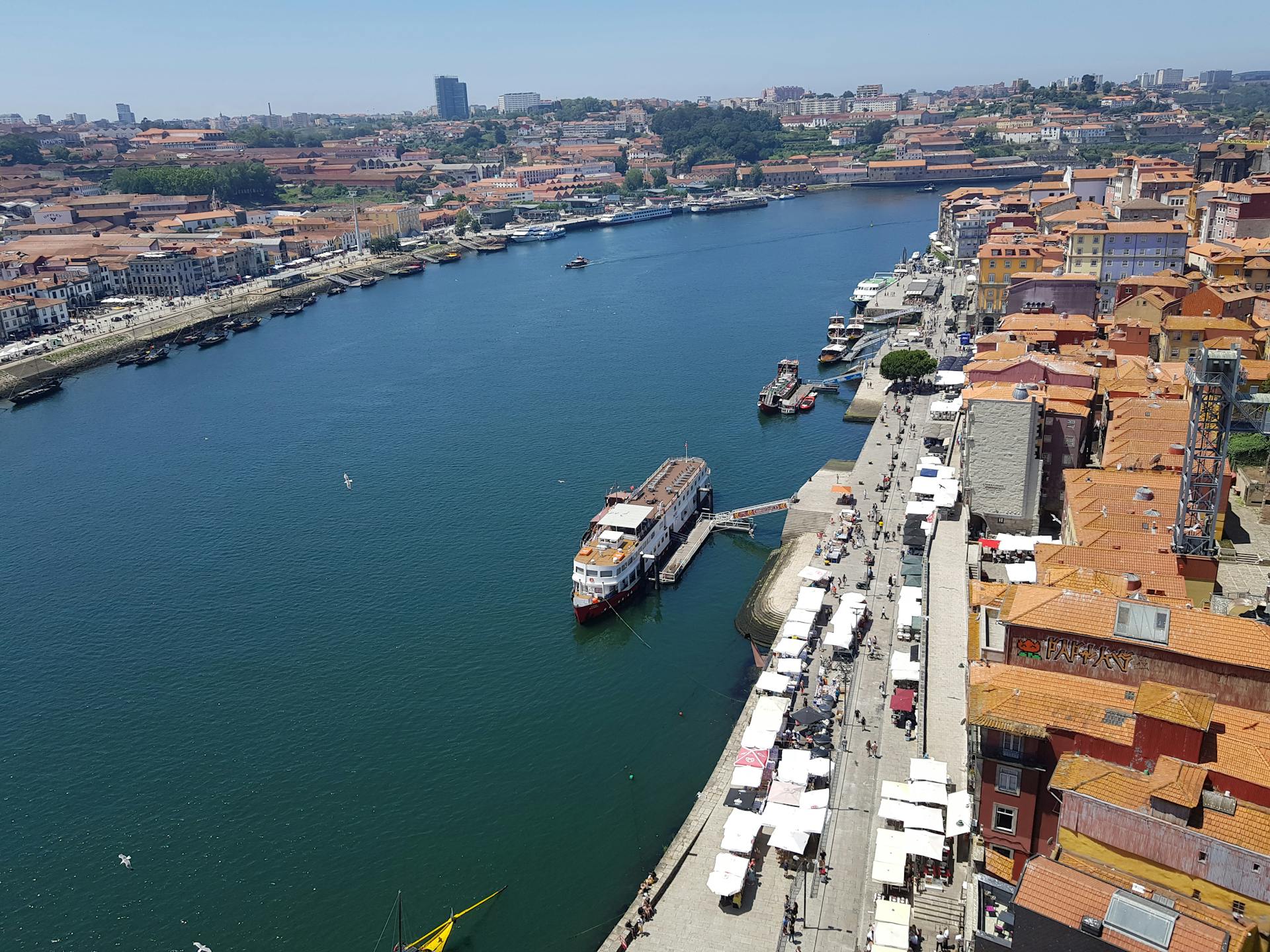
Annually, the port manages approximately 6,100,000 tonnes of cargo and handles around 20,000 TEUs. Over 1500 ships visit the port each year.
The primary types of cargo handled at this port include roll-on/roll-off cargo, container goods, cement, clinker, metal, copper and zinc concentrate, oil, gasoline, and more.
Setubal Port has a naturally sheltered harbor with a deep and secure anchorage, supporting the region's fishing industry.
The port has numerous terminals dedicated to private use by shipping companies, such as the Terminal Secil and the Terminal da Uralada.
The recreational dock of Fontainhas provides a mooring facility for about 150 small ships and boats, offering fresh water and recreational links along with sanitary facilities.
Map
The map of the port is a crucial tool for navigating the area. It's usually available at the port's information center or online.
The map typically includes the location of various facilities such as the terminal, cargo storage, and fuel stations. These facilities are often marked with symbols or colors to make them easily identifiable.
Recommended read: Port Piraeus Map

The port's layout can be complex, with multiple berths and cargo handling areas. This can make it difficult for visitors to find their way around without a map.
A good map will also show the location of amenities such as restaurants, restrooms, and parking areas. These are often located near the terminal or other high-traffic areas.
The map may also include information about the port's security procedures and rules. This can help visitors understand what to expect when entering the port.
Port Facilities
Portugal has a total of 15 major ports, with several smaller ones scattered along its extensive coastline.
The largest port in Portugal is the Port of Lisbon, which is also one of the busiest in the country, handling over 1 million containers per year.
The Port of Lisbon is strategically located near the city center, making it an ideal hub for cargo and passenger transportation.
The Port of Leixões, located in the north of Portugal, is another significant port, handling a significant portion of the country's cargo traffic, including oil and natural gas imports.

The Port of Sines is a major container port, located on the southwest coast of Portugal, and is also an important hub for cruise ships and passenger ferries.
The Port of Setúbal is a smaller but still significant port, located near the city of Setúbal, about 30 kilometers south of Lisbon.
Business and Trade
Portugal's ports play a significant role in the country's economy, with many serving as major trade hubs.
The Port of Lisbon is one of the busiest ports in Portugal, handling over 1 million containers annually. It's a key hub for the import and export of goods, particularly electronics and textiles.
The country's ports are also important for the importation of oil and other energy products, with the Port of Sines being a major hub for the storage and distribution of these goods.
Importers and Exporters
Portugal's ports are a haven for importers and exporters, offering a wide range of industries reliable logistics solutions. With specialized terminals catering to various sectors, from automotive to agriculture, importers can streamline their operations and reduce costs.

Portugal's ports have streamlined customs processes, making it easier for importers and exporters to navigate the logistics process. This efficiency reduces lead times and costs, allowing businesses to stay competitive in the global market.
The country's global connectivity and advanced port infrastructure make it an attractive location for importers and exporters. Freight forwarding companies benefit from these advantages, ensuring smooth operations and reducing lead times and costs.
A unique perspective: Global Ports
Importance of Setubal
The port of Setubal is a crucial hub for trade and commerce in Portugal. It's located in the industrial region and is close to a broad consumer market.
Setubal handles a significant amount of cargo, with approximately 6,100,000 tonnes managed annually. This makes it a vital part of Portugal's economy.
The port's proximity to the Sado river estuary provides a naturally sheltered harbor, making it an ideal location for shipbuilding and ship repair services. This is a major advantage for the fishing industry in the region.
Setubal welcomes over 1500 ships each year, making it a busy and important port facility.
Expansion and Development

Portugal's ports are investing heavily in expansion projects to meet the growing demand for trade. These projects include adding new terminals to increase capacity.
One notable example is the port of Sines, which is undergoing significant upgrades to its infrastructure. Deepening berths will allow larger ships to dock, boosting the port's efficiency and productivity.
Improved intermodal connectivity is also a key focus, enabling smoother transportation of goods between ports and inland areas.
Trends and Innovations
The expansion and development of new technologies have led to exciting trends and innovations.
One notable trend is the increasing use of renewable energy sources, with solar power installations growing by 20% annually.
Solar panels are being integrated into building designs to provide power and reduce carbon footprints.
This shift towards sustainability is driven by the need to reduce greenhouse gas emissions and mitigate climate change.
Investments in renewable energy have increased significantly, with a 30% growth rate in the past year.

Companies are now exploring new ways to harness energy from the environment, such as tidal and wave power.
Innovative technologies like energy storage systems and smart grids are also being developed to optimize energy distribution.
These advancements have the potential to transform the way we live and work, making our communities more resilient and efficient.
Expansion Projects
Port expansion projects are underway to meet the growing demand for shipping and trade.
Sines and Leixões are two ports leading the way with new terminal additions.
These new terminals will increase the ports' capacity to handle more cargo.
Deepening berths is another crucial aspect of the expansion projects.
By doing so, larger ships can dock and unload their cargo more efficiently.
Improving intermodal connectivity is also a key focus of the expansion projects.
This will enable seamless transportation of goods from ships to trains and trucks.
Frequently Asked Questions
How many ports are there in Portugal?
Portugal has 5 key ports, divided between the north and south regions. These ports are strategically located along the country's coastline.
What is the most popular port in Portugal?
The Port of Lisbon is Portugal's most versatile port, serving as a central hub for trade, tourism, and local industries. Located in the nation's capital, it's a centuries-old hub that remains a key destination for various activities.
Sources
- https://pangea-network.com/top-5-major-ports-in-portugal-what-you-need-to-know/
- https://www.limaniprovisions.com/news/top-ports-in-portugal/2/
- https://www.zenddu.com/main-container-ports-in-portugal/
- https://www.marineinsight.com/know-more/5-major-ports-in-portugal/
- https://www.lexology.com/library/detail.aspx
Featured Images: pexels.com

